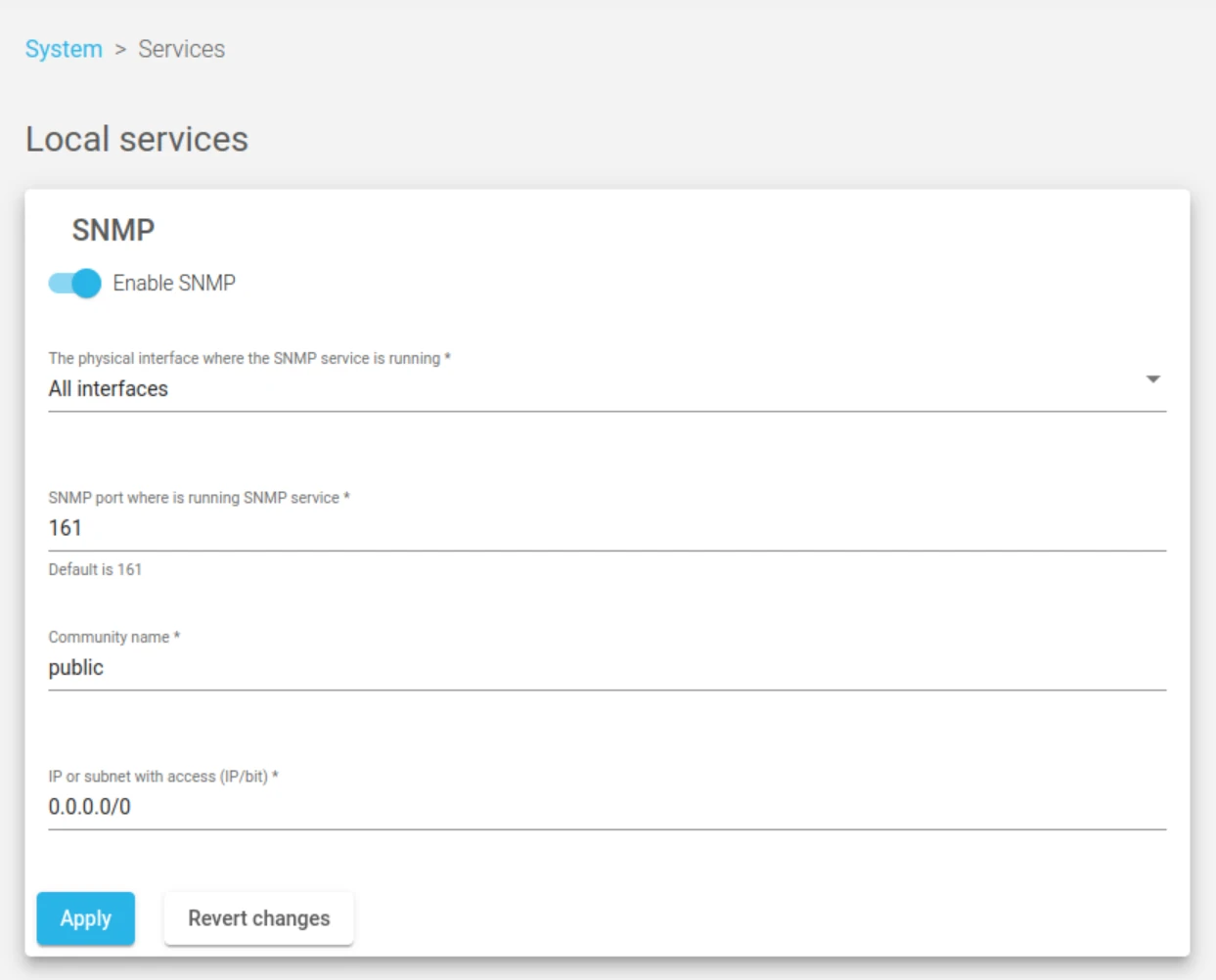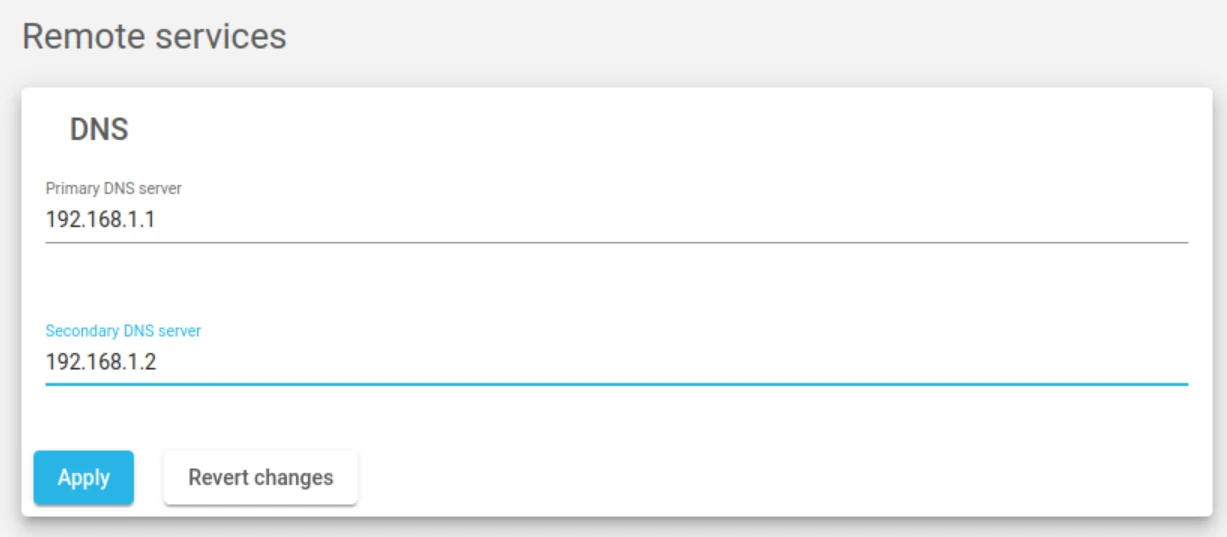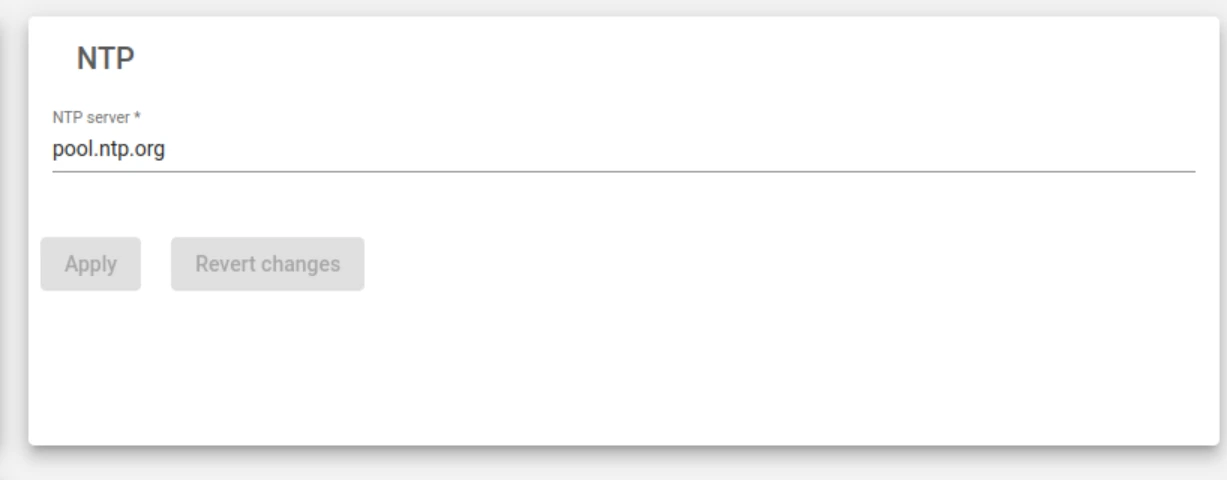Local Services #
The Local Services section manages internal services on the load balancer. This community edition supports the SNMP service.
Every change in this section will be applied by clicking on the Apply button. Use the Revert Changes button in order to discard the modifications made in the form and revert back to the previously applied configuration.
SNMP service #
This service is used for system load balancing and monitoring purposes integrated into the centralized SIEM platform.
SNMP Enabled. This toggle button enables or disables the SNMP service. By default, the service is disabled. If enabled, the form will surface with the necessary fields to fill.
Physical interface where is running SNMP service. The interface where the SNMP service will run.
Port. The port where the SNMP service will be bound. The default port is 161.
Community name. This name is in read-only format. By default, the community name, public will be used.
IP or subnet with access (IP/bit). Client subnets or addresses allowed to access the SNMP service. In case you want to allow access from only one IP address, use the netmask bit /32.
Remote Services #
The Remote Services section manages external services provided to the load balancer like the (DNS) for resolving network names, the NTP for synchronizing the system clock and the Proxy service. This allows the load balancer to use an external proxy for its internal services.
DNS Service #
The DNS service is used to resolve domain names to obtain their network addresses. Server configurations for DNS resolution will be stored in the system file /etc/resolve.conf.
Primary Server. The IP address of the primary name server. The default IP address is 8.8.8.8.
Secondary Server. The IP address of the secondary name server. Using this IP address is optional, but it is blank by default.
PROXY #
This service is used to enable Internet access from the load balancer through a navigation proxy for HTTP and HTTPS.

HTTP proxy. Add the URL or IP and port to be used to connect to HTTP Internet services.
HTTPS proxy. Add the URL or IP and port to be used to connect to secure HTTPS Internet services.
NTP service #
This service is used to synchronize the load balancer’s system date and time clock.
NTP Server. The server IP address or domain name to which the load balancer connects to synchronize the system date and time. The default value will be pool.ntp.org.
Let’s Encrypt #
This certificate proves a server’s authenticity and provides secure lines of data transmission through data encryption.
Read more about Let’s encrypt.
Email. Notification email for Let’s Encrypt service management.







